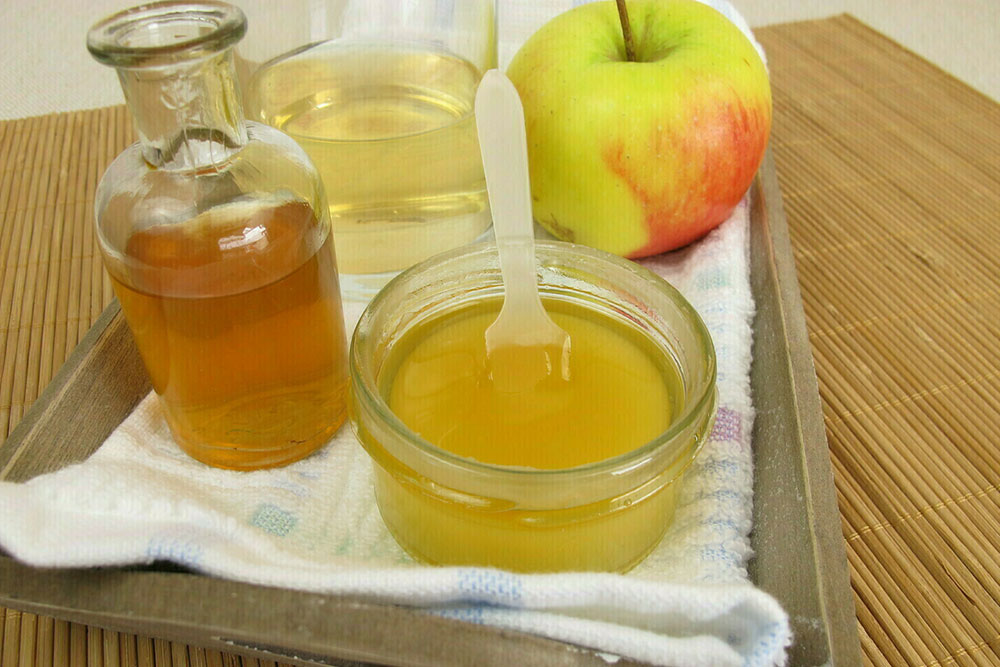
13 kitchen ingredients to manage ticks and fleas on dogs
Pet owners know the constant battle against ticks and fleas. These tiny pests pose a persistent threat to the well-being of dogs, causing discomfort and various health issues. While numerous commercial products can solve this problem, not all may be suitable for one’s pet. Instead, one can use kitchen ingredients to manage ticks and fleas and bring comfort to one’s furry friend. These home remedies are not only safe and natural but also highly effective.
How do ticks and fleas affect dogs?
Tick and flea bites cause itching and trigger a cycle of incessant scratching in dogs. This, in turn, gives rise to a range of problems. The allergic reactions triggered by flea saliva can manifest as skin redness, swelling, lesions, and welts. Moreover, if the dog ingests these fleas, it can lead to tapeworm infections. Ticks and fleas lay eggs in hard-to-reach areas, such as cracks in floorboards. This makes their eradication more challenging. Beyond the direct impact on the dog’s health, the relentless scratching also causes hair fall, leaving dogs with patchy coats, and dead skin accumulates. Effective and timely remedies can break the cycle of discomfort, allergic reactions, and potential health risks associated with these troublesome pests.
Kitchen ingredients that help with ticks and fleas on dogs
Apple cider vinegar
Apple cider vinegar is a versatile household item that has proven effective in repelling ticks and fleas. Its acidic nature creates an environment on the dog’s skin that these pests find inhospitable. Apple cider vinegar also maintains the dog’s pH levels. Mixing equal parts of apple cider vinegar and water in a spray bottle and applying it to the dog’s coat can be an excellent preventive measure. One can also add a pinch of sea salt for added relief. It’s important to avoid the dog’s eyes while spraying the liquid.
Lemon
The aroma of this citrus fruit is known to repel fleas and is a natural way of reducing the pest problem. Lemon juice can be diluted with water and sprayed on the dog’s fur. Alternatively, one can create a lemon-infused spray by boiling sliced lemons in water and letting it cool before applying it to the dog’s coat, especially in the armpits and around the tail.
Rosemary
Rosemary also acts as a natural flea repellent. Creating an herbal flea dip by steeping rosemary leaves in hot water, straining the solution, and allowing it to cool before applying it to the dog’s coat can be an effective way to keep these pests at bay.
Neem oil
Neem oil is renowned for its insecticidal properties and is commonly used in natural pest control. Mixing a few drops of neem oil with a carrier oil, such as coconut oil, and applying it to the dog’s skin can help repel ticks and fleas. One should be cautious with the concentration, as neem oil can be strong and may cause irritation if not properly diluted.
Coconut oil
Coconut oil is beneficial for the dog’s skin and coat and has natural antimicrobial properties. It contains polyunsaturated fatty acids, which are known to ease inflammation. Applying coconut oil to the dog’s fur can help soothe irritated skin and create a barrier against ticks and fleas. One should, however, consult a veterinarian before opting for it.
Diatomaceous earth
While not a kitchen ingredient per se, food-grade diatomaceous earth is a natural and safe way to combat fleas. It is a powder made from microscopic algae remains. Sprinkling a small amount of diatomaceous earth on the dog mattress, carpet, and nooks and crannies of the house can help to dehydrate and kill fleas upon contact. Let the powder sit for a day or two, and then vacuum the areas clean to avoid pest growth.
Garlic
Some believe small amounts of garlic help repel ticks and fleas. Adding some garlic combined with brewer’s yeast to the dog’s food causes the pet to give out an unpleasant odor that repels fleas. This home remedy, although deemed safe by some, should be discussed with a veterinarian.
Peppermint oil
Peppermint oil has a refreshing scent that can act as a natural insect repellent. Diluting a few drops of peppermint oil with water and spraying it on the dog’s coat or in areas that are infested around the house can help keep ticks and fleas at bay.
Lavender oil
Known for its calming properties, lavender oil also has insect-repelling qualities. Mixing lavender oil with a carrier oil and applying it to the dog’s fur helps with flea prevention.
Cedarwood oil
Cedarwood oil has a strong scent that can repel ticks and fleas. Mixing a few drops of cedarwood oil with water or adding it to a homemade pet shampoo can contribute to pest control.
Eucalyptus oil
Diluted eucalyptus oil with another carrier oil or water can be sprayed on couches, bedding, or floors. This mixture has a distinct aroma that can act as a natural insect deterrent.
Citrus peels
The peels of citrus fruits like oranges and lemons contain natural oils that repel fleas. Rubbing citrus peels directly onto the dog’s fur or boiling the peels in water to create a spray can help deter ticks and fleas. One can also add garlic cloves or rosemary to the mixture for added benefit.
Oregano oil
Oregano is another spice that contains carvacrol, a potent chemical recognized for its flea-terminating properties. One can mix oregano oil and olive oil and apply the mixture to the pet’s ears, skin, and fur with a cotton ball to repel these pests.
One should be aware that individual dogs may react differently to these ingredients, and it’s crucial to observe one’s pet for any signs of irritation or discomfort. Always consult with a veterinarian before introducing new ingredients into the dog’s care routine, especially if one’s pet has pre-existing health conditions or sensitivities.


